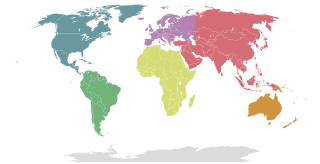 W
WAhmadiyya in Canada is a religious sect within the Islamic community of Canada. The earliest known Ahmadis visits of the country were back in 1923. Later, Ahmadis came to Canada from various parts of the world, in particular from Pakistan, as a result of their declaration as a Non-Muslim Community by the Pakistani Government legislations in 1974 and again in 1984. The Community was first officially registered in Canada in 1966 in Ontario as the "Ahmadiyya Movement in Islam (Ont) Inc." and the first missionary assigned to Canada was Maulana Syed Mansoor Bashir Sahib. The first missionary assigned to Western Canada was Maulana Ali Haider Upal sahib Shaheed, who was appointed in Vancouver in 1982, and later, stationed in Calgary and in Saskatoon. As the only missionary stationed in Western Canada, he served the Ahmadiyya Jama'ats in Vancouver, Calgary, Edmonton, Saskatoon, Regina, Lloydminster, and Winnipeg between 1982 and 1986.
 W
WAll-dressed chips are a potato chip flavour popular in Canada. Ruffles, a major producer of all-dressed potato chips, describes the flavour as a mix of tomato ketchup, barbecue sauce and salt & vinegar.
 W
WThe B.C. roll is a Maki-zushi (roll), a kind of sushi containing barbecued salmon and cucumber. It is prepared as an uramaki roll, a style of sushi in which the rice is on the outside. Often the roll contains barbecued salmon skin coated in a sweet sauce. There are many variations of this roll including barbecued salmon skin with mayo.
 W
WCanada has participated in the Eurovision Young Dancers twice since its debut in 1987. They remain the only North American country to ever participate in a Eurovision event, and were also the only Associate Member of the European Broadcasting Union to participate in any Eurovision event until Australia's Eurovision Song Contest debut in 2015.
 W
WCanadiana is a term used to describe things, ideas, or activities that concern or are distinctive of Canada, its people, and/or its culture, especially works of literature and other cultural products. It can also refer to the collection of such materials, such as in cultural fields like music or art.
 W
WGinger beef is a Canadian Chinese dish dish made from beef, ginger, and a distinctive sweet sauce.
 W
WA house dish is a very large wooden dish, often ornately carved and painted in various human or animal figures, used in First Nations ceremonies in British Columbia. House dishes may be reserved only for special foodstuffs and not used for more common fare.
 W
WMaplewashing or maple washing refers to a tendency by Canadian governments, institutions, and media to perpetuate the notion that Canada is morally superior to other countries, thus sanitizing and concealing negative historical and contemporary actions.
 W
WMoroccan Canadians are Canadians of full or partial Moroccan descent, as well as people from the state of Morocco who are ethno-linguistic and religious minorities. According to the 2011 Census, there were 71,910 Canadians who claimed full or partial Moroccan ancestry, an increase compared to the 2006 Census. A large minority of Moroccan Canadians, comprising 27,000 people, are Moroccan Jews.
 W
WSchmoo torte is a Canadian dessert. Although it is relatively popular and well-known nationwide, it is most famous in Western Canada, especially Manitoba. It is a torte with layered whipped cream, caramel, and nuts, commonly made using angel food or sponge cake.
 W
WA sour cream doughnut is a type of doughnut that incorporates sour cream into its batter. This type of doughnut is often dipped in a vanilla flavored glaze after frying and usually has no filling. While the exact date or place of origin for the sour cream doughnut is not known, one recipe for this type of doughnut was published by the Ladies' Aid Society of Marion, Ohio in 1894.
 W
WSt. Catherine's Taffy is a variety of taffy made by French-Canadian families to celebrate the feast day of Saint Catherine of Alexandria.
 W
WSushi pizza is a Canadian dish that originated from Toronto and a fusion of sushi and pizza often served in the Greater Toronto Area, invented by Kaoru Ohsada no later than May 1993 as a Nami Japanese Seafood Restaurant chef. It uses a slightly crispy yet chewy fried rice patty as the base and is topped with a layer of sliced avocado, a layer of sliced salmon, tuna or crab meat, a drizzle of blended mayonnaise and wasabi powder and is served in wedges. Nori, pickled ginger, and roe are sometimes also served as toppings or sides.